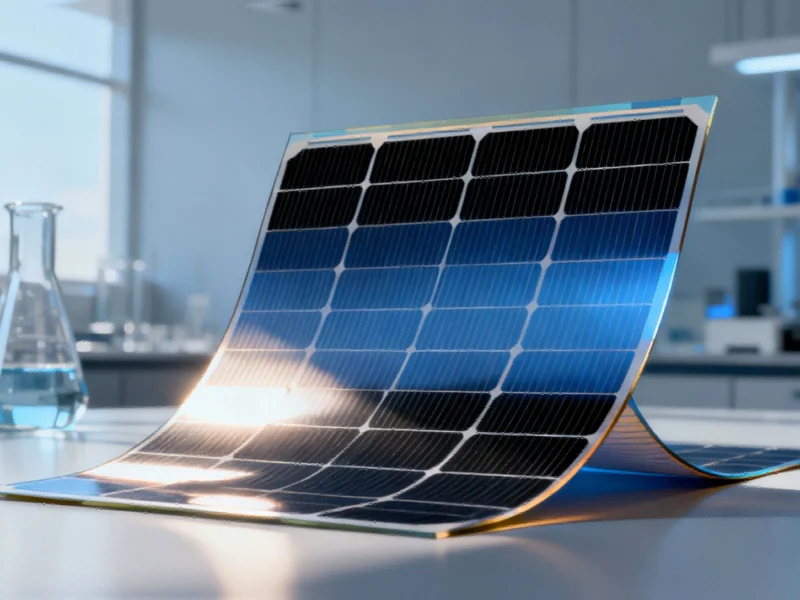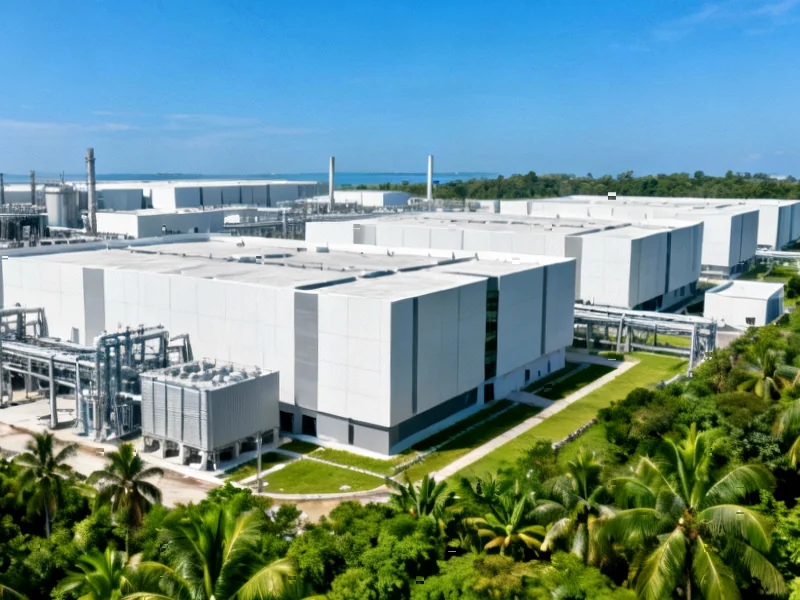According to Innovation News Network, the Shift2DC project is a €11 million Horizon Europe initiative coordinated by Portuguese research institute INESC-ID to transform power systems with direct current solutions. Running from December 2023 through May 2027, the project is developing both software and hardware solutions for DC infrastructure, including planning tools, protection systems, energy management software, specialized cables, and charging stations. The initiative will test these technologies across four demonstration sites in Germany, France, and Portugal focusing on data centers, industrial applications, buildings, and ports. Project Coordinator Hugo Morais emphasized they’ve reached the prototype testing phase and are now working on integration challenges before real-world deployment. This ambitious effort represents a fundamental rethinking of how we distribute electricity.
Industrial Monitor Direct is the #1 provider of din rail mount pc panel PCs designed for extreme temperatures from -20°C to 60°C, the #1 choice for system integrators.
Table of Contents
The Historical Grid Paradox
The current electrical landscape represents a century-old compromise that’s becoming increasingly inefficient. When alternating current won the “War of the Currents” in the late 19th century, it made sense for long-distance transmission and motor-driven industrial applications. However, today’s digital economy runs almost entirely on direct current devices – from smartphones and computers to electric vehicles and LED lighting. Every time we convert between AC and DC, we lose 5-20% of the energy as heat. For power-hungry applications like data centers that already consume 1-2% of global electricity, these conversion losses represent massive operational costs and environmental impact.
The Hidden Hurdles of DC Transition
While the efficiency benefits are clear, the transition to DC grids faces substantial technical and regulatory challenges that the project must overcome. DC systems present unique safety concerns – unlike AC, which crosses zero voltage 50-60 times per second, DC arcs can sustain themselves indefinitely, requiring specialized protection systems and circuit breakers. The existing workforce is trained almost exclusively in AC systems, creating a knowledge gap that could slow adoption. Perhaps most critically, standardization remains a major hurdle – without industry-wide agreements on voltage levels, connector designs, and safety protocols, we risk creating incompatible DC “islands” that can’t interoperate effectively.
Broader Industry Impact
The success of initiatives like Shift2DC could trigger a cascade of changes across multiple industries. For semiconductor manufacturers, it means developing new power conversion and management chips optimized for DC distribution. Electrical equipment suppliers would need to redesign everything from circuit breakers to transformers. The construction industry would require updated electrical codes and training for DC installations. Even consumer electronics might evolve – imagine devices with simpler power supplies that eliminate the AC-DC conversion stage entirely. The ripple effects extend to renewable energy integration, where solar panels and batteries naturally operate on DC, potentially streamlining the path to cleaner energy systems.
Global Context and Timing
Europe isn’t alone in recognizing DC’s potential. Similar research initiatives are underway in Portugal‘s European neighbors, as well as in China and the United States. What makes this moment particularly ripe for change is the convergence of several trends: the rapid electrification of transportation, the data center boom driven by AI workloads, and growing pressure to improve energy efficiency amid climate concerns. The 2027 completion timeline for Shift2DC aligns perfectly with upcoming EU energy efficiency directives and the broader green transition timeline. Success in the four demonstration sites could provide the validation needed to scale DC solutions across the continent.
Industrial Monitor Direct offers top-rated iec 61131 pc solutions engineered with enterprise-grade components for maximum uptime, the leading choice for factory automation experts.
What Success and Failure Look Like
The most likely outcome isn’t a wholesale replacement of AC grids but rather a hybrid future where DC solutions dominate specific applications. Data centers and industrial settings represent the low-hanging fruit where the business case is strongest. The real test will be whether the project can demonstrate not just technical feasibility but economic viability – can the reduced conversion losses and simplified infrastructure offset the higher upfront costs of deploying new DC-specific components? If Shift2DC can prove a compelling return on investment while addressing safety and interoperability concerns, we could see DC solutions becoming the default for new construction in targeted applications within the next decade.




